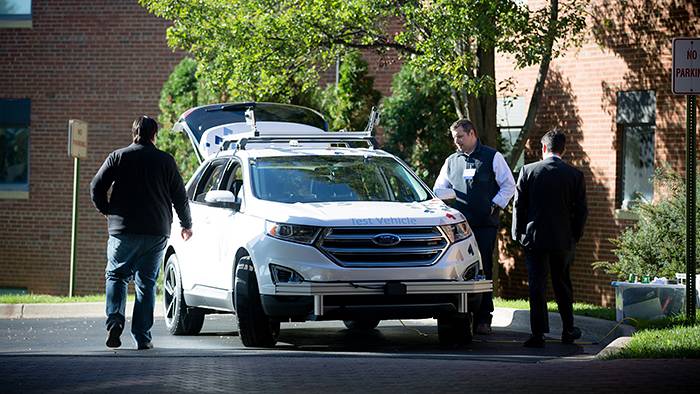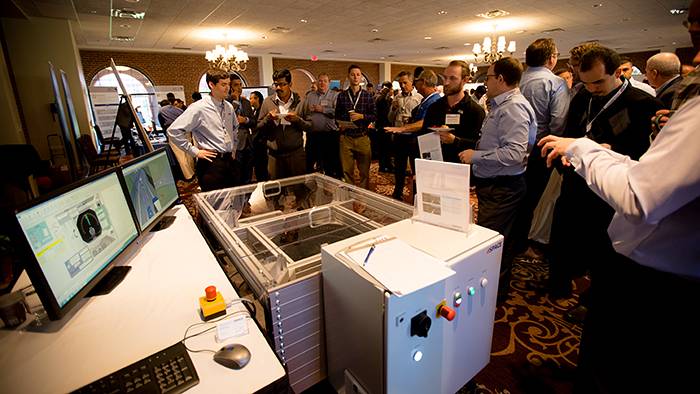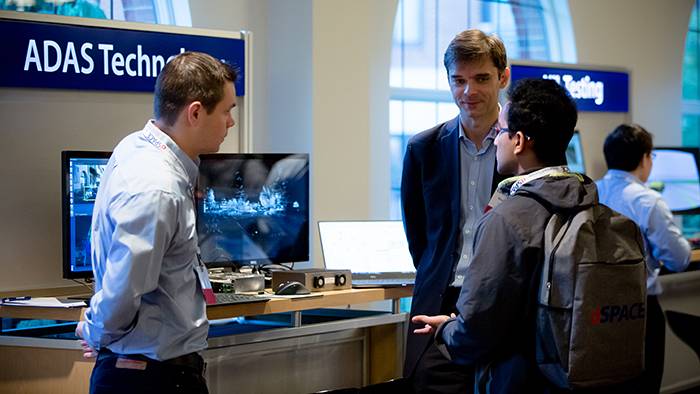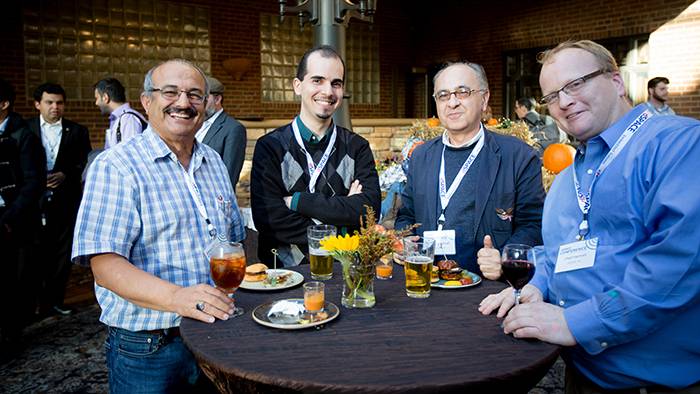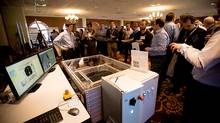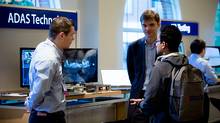dSPACE Technology Conference 2017
|
Published: November 02, 2017 |
Challenges and Solutions for Realizing Connected, Self-Driving, Electric Vehicles
Hot technology growth areas − including semi and highly autonomous vehicles, artificial intelligence, robotics, connectivity and electrification − are generating vast new opportunities and setting the stage for a technological revolution
At the 2017 dSPACE Technology Conference held Oct. 17-18, 2017, more than 250 attendees gained industry insight on the latest predictions for emerging technology growth markets and learned how they can prepare for the future that is coming.
Lisa Whalen, Global Vice President – Automotive & Transportation, Markets and Markets
Keynote presenter Lisa Whalen, Global Vice President – Automotive & Transportation for Markets and Markets, said OEMs, technology companies and taxi aggregators are pursuing the rapid advancement of semi-autonomous / autonomous vehicles, and the artificial intelligence industry is expected to surpass the $10B mark within the next 5-7 years.
With the integration of sensor interfaces to body electronics, Whalen said the car has evolved into a connected, data-generating mobile machine. She predicted the connected car market will reach $47B by 2020. Likewise, the global telematics market – enabling popular amenities such as automatic crash notification, emergency calling, navigation and road assistance – is set to reach the $40B mark within the next 5 years.
As the cost of batteries have come down considerably, Whalen said the battery electric vehicle market is expected to grow more than four fold over the next 5 years. The UK, France, China and India are setting this growth into motion with their declarations to phase out internal combustion engines by 2030-2040.
Auto industry leaders are equating the quantum of change in next 5 years with that of the last 50 years. As the industry prepares for this technological revolution, a massive amount of testing will have to be performed.
Major Challenges … Is There a Way?
Andre Rolfsmeier, Lead Product Manager - Advanced Applications & Technologies, dSPACE GmbH
In the area of software development, keynote presenter Andre Rolfsmeier, Lead Product Manager of Advanced Applications & Technologies for dSPACE GmbH, touched upon three of the major challenges facing automotive OEMs and suppliers:
- How to prototype automated driving functions (perception, data fusion and function algorithms).
- How to validate sensor ECUs based on different sensing technologies.
- How to conduct extensive testing to ensure functional safety and system robustness.
With an endless number of possible traffic scenarios, environmental conditions and other unknown factors, is there a way to complete the hundreds of millions of test miles required for validation? Rolfsmeier said this can be done, and it can be done cost efficiently and in a timely manner.
Rolfsmeier provided an overview of dSPACE’s an end-to-end solution, from prototyping automated driving functions to validation and verification, and highlighted solutions including:
- RTMaps (Real-Time Multisensor Applications) software for time-stamping, processing, recording and visualizing sensor data (e.g. camera, radar, Lidar, GNSS sensors, IMUs, etc.).
- The new dSPACE MicroAutoBox Embedded PC for high-performance sensor data processing.
- The new MicroAutoBox Embedded DSU (data storage unit) for reliable storage and easy data transfer.
- And many new capabilities for testing autonomous driving systems in the lab environment using MIL, SIL and HIL capabilities.
With many types of sensors – camera, radar, Lidar, ultrasonic sensors – and different data sources from maps, V2X communication etc., he explained that testing the robustness of applications is becoming a challenge. With billions of possibilities in the real-world, it is impossible to test ever scenario, let alone to regressively validate the autonomous vehicle safety features. Such an effort requires special solutions to not only perform the testing, but to do it efficiently, regressively and with safety for all.
The key to performing such testing is the ability to stimulate the various sensors through dynamic simulation of the vehicle, its environment, traffic, surroundings, etc. Rolfsmeier discussed a variety of possibilities and solutions available from dSPACE.
In conclusion, Rolfsmeier said that dSPACE already offers a comprehensive toolchain for autonomous driving and will continue to invest and offer more solutions in this technology growth area.
Lessons Learned
Paul Liu, Director - Automotive Architecture, RENOVO.AUTO
Keynote presenter Paul Liu, Director of Automotive Architecture at RENOVO.AUTO, shared lessons learned from a project involving the creation a platform to support autonomous vehicle controls. He shared examples of data that was collected to support the development and validation of the autonomous function and offered conference attendees the following advice:
|
|
Event Summary
The conference featured two days of technical presentations and workshops, giving attendees many opportunities to raise questions, learn about other dSPACE users’ unique application projects, and network with peers.
Frank Mertens, Product Manager of Rapid Prototyping Systems for dSPACE GmbH, revealed a new dSPACE product: a SCALEXIO real-time platform for rapid control prototyping. The new unit features enhanced real-time performance to manage fast, closed-loop applications, more flexibility with a highly scalable architecture (system partitioning) and more network support, including CAN, CAN FD, Lin, FlexRay, SAE J1939, EtherCat, MIL-STD-1553, ProfiBus, Open Alliance and ARINC.
Attendees got to see several technology solutions in the exhibit hall with dSPACE partner companies on hand. Exhibiting partner companies included: AbsInt, BTC Embedded Systems, EnSoft, MathWorks, Model Engineering Solutions, NXP Semiconductors, Ohio State University / EcoCAR 2017 1st Place Winning Team, P3 North America and Reactive Systems.
P3 gave conference attendees rides in its autonomous test vehicle, which includes a MicroAutoBox used for rapid prototyping and simulation.
dSPACE displayed a radar test bench for over-the-air stimulation of radar sensors. The test bench featured four antennas to simulate the lateral movement of independent targets, and is ideal for testing autonomous emergency braking (AEB), adaptive cruise control (ACC) and blind spot detection.
We hope to see you at a future dSPACE event!
Drive innovation forward. Always on the pulse of technology development.
Subscribe to our expert knowledge. Learn from our successful project examples. Keep up to date on simulation and validation. Subscribe to/manage dSPACE direct and aerospace & defense now.

